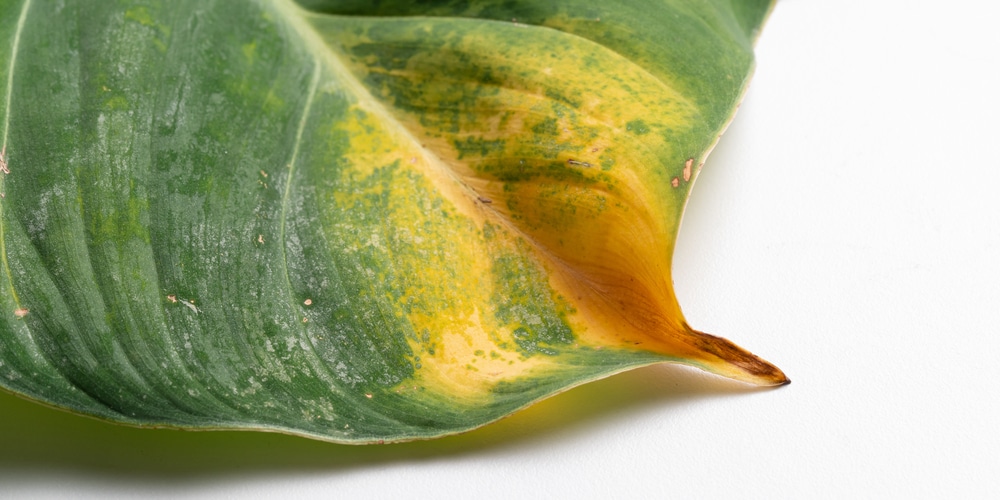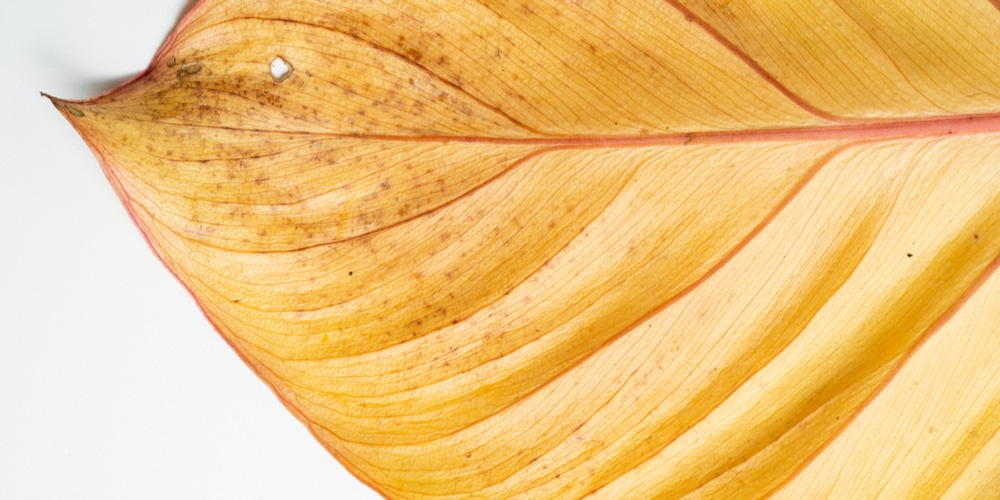Philodendrons are popular houseplants that are considered low maintenance. These plants are fast-growing and have attractive foliage. Unfortunately, some common problems may occur when growing a philodendron. One of the most common issues people face is their philodendron leaves start to turn brown. There are several reasons that foliage can become discolored.
If your plant’s leaves have started to turn yellow or brown, you may need to make a few adjustments to your plant’s care. Let’s look at the main reasons philodendron leaves turn brown. We’ll also discuss how you can improve the health of your plant.
Reasons Your Philodendron Leaves are Turning Brown
There are several reasons that the leaves of your philodendron may have started to turn brown. Philodendrons are tropical plants that require specific care. If your plant isn’t getting the right amount of water or light requirements, it will suffer. When a philodendron plant turns yellow or brown and looks weak or unhealthy, it’s likely because its care requirements aren’t being met. Here are some tips to help you grow a thriving Philodendron plant:
Water
Aim to keep your Philodendrons soil moist by watering regularly. These plants need enough water to thrive but shouldn’t be overwatered. Always check the earth before watering your plant. The topsoil should be left to dry out.
Underwatering
Overwatering or underwatering can cause the leaves of a philodendron to turn brown. If you’re only watering your plant lightly, this could cause the leaves to brown. Water your plant thoroughly, and don’t stop until the water begins to flow from the drainage holes.
Overwatering
Too much water is another reason that philodendrons suffer. Philodendrons need enough water but, you shouldn’t allow the soil to become waterlogged. Ensure your plant has well-draining soil and drainage holes at the bottom of the pot. If your plant has been overwatered, it may suffer from root rot and need to be treated and repotted.
Light
Another reason philodendrons leaves turn brown is due to insufficient lighting. Philodendrons should be placed in bright indirect light. These plants can be affected by sunburn if left in the full sun. The sun’s UV rays can burn your plant, even through a window, and will cause brown spots to form.
Philodendrons can also suffer if they are grown in shaded areas and don’t get enough light. If your plant has started to turn yellow and then brown in the winter, its low light is likely to be the cause. You can move your plant nearer the window to help it recover.
Philodendron leaves are turning brown due to diseases
Bacterial diseases such as leaf spot, leaf blight, and tip burn can affect philodendrons and cause the foliage to turn brown. To solve the problem, quarantine your plant, so the bacteria doesn’t affect other plants. Use a disinfected pair of scissors to remove affected leaves.
Avoid getting the leaves wet when watering your plant, as bacteria require moisture to spread.
Pests
An infestation of sap-sucking insects such as aphids, spider mites, and mealybugs can cause plant leaves to turn brown. Look out for signs of pests and use neem oil or an insecticidal spray to get rid of them.
Philodendron leaves are turning brown due to Over Fertilization
It’s easy to accidentally overfertilize a Philodendron plant as they are not heavy feeders. Too much fertilizer can cause the roots to burn due to chemicals, which will cause the leaves to discolor. Excess salt can also build up in the soil if you’ve been using too much fertilizer. In most cases, the leaves will start to turn brown at the tips if the plants have been overfertilized.
It’s best to fertilize your philodendron two or three times annually using an organic fertilizer to avoid problems. If you think your plants have been over-fertilized, you may need to report your plant.
Lack of Humidity
As Philodendrons are tropical plants, they like humidity. A lack of moisture in the air could cause your plant leaves to dry out and turn brown. If your plant’s leaves feel crisp, this may be the problem.
This issue can be easily solved by misting your plant daily. Use a spray bottle that produces a fine mist and spray your plant leaves daily. It’s best to do this job in the morning so that excess moisture can evaporate during the day. Be careful not to soak your plant’s leaves, as too much moisture will encourage fungus to grow.
Philodendron leaves are turning brown: Final thoughts
As you can see, there are many reasons your plant’s leaves may have started to turn brown. With a bit of detective work, you’ll be able to figure out the cause and solve the problem. Once your plant’s foliage has been damaged, the leaves won’t change back to their normal color. You can cut off the damaged leaves and wait for new growth.
Related article: Why is My Philodendron Turning Yellow?

